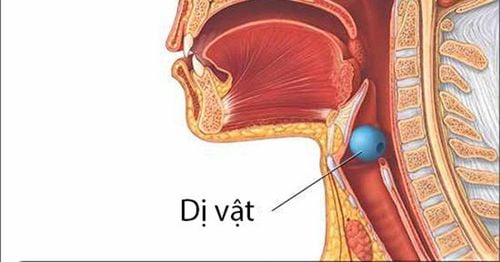This is an automatically translated article.
The article was professionally consulted by Dr. CCII Nguyen Van Thai - Department of Otolaryngology and Head and Neck Surgery, Vinmec Danang International General Hospital.Structure of the Ear - Nose - Throat are cavities that communicate with each other and with the outside, so the disease of the ear, nose and throat is not a disease of each part but is related and directly affects other parts. When you have a sore throat, it will cause rhinitis, laryngitis because the throat - nose - larynx connect with each other; pharyngitis - nose is often the cause of sinusitis.
1. How are ENT related to each other?
Ear - nose - throat communicate with each other like the sinuses through the nose, nasopharynx with the ear, mastoid bone through the tympanic tube. The mucosa here is dominated by a very rich vascular and nervous system. Due to such characteristics, ENT disease is mainly a disease of the mucosa, mucosal pathology is prone to recurrence, especially in allergic location, children...
The ENT cavity is open to So when injured, it is easy for bacteria to spread from one cavity to another: Frontal sinuses are easily inflamed when having rhinitis. On the other hand, the frontal sinus wound is a closed wound and easily contains foreign objects such as bullets, stones, soil... Location of the Ear, Nose and Throat near important organs: Meninges, brain, labyrinth, nerves, vessels great blood.
2. Pathological characteristics of otolaryngology

Because the structure of the ear, nose and throat is the cavity that connects with each other and communicates with the outside, so the pathology of the ENT is not a disease of each part but is related and directly affects other parts. When you have a sore throat, it will cause rhinitis, laryngitis because the throat - nose - larynx connect with each other; Sore throat - nose is often the cause of sinusitis.
In addition, because the ear, nose and throat communicates with the outside environment, ENT diseases are mainly related to the environment with 2 basic factors: infection and allergies. In addition, other factors such as temperature and weather also play a very important role in the formation of the disease. Diseases of the ENT can both affect other parts and organs, most notably the respiratory and digestive systems.
Therefore, when using drugs in otolaryngology, the reactions and consequences caused by the drug can be immediately dangerous to life, daily activities and life. Medicines used in otolaryngology not only affect the ear, nose and throat, but can affect the whole body and many other parts and organs.
3. Relation of ENT disease with other organs

The ear is the gateway to the hearing and balance system. The nose is the entry and exit of the respiratory tract. The pharynx is the gateway to the food and airways. Damage to the ear can affect the central nervous system, damage to the nose can affect breathing, damage to the throat can affect digestion. In contrast, diseases in the central nervous system, in the respiratory tract, in the gastrointestinal tract can cause damage to the ears, nose, and throat.
3.1 ENT medicine has many close relationships with internal medicine such as:
Nosebleeds, varicose veins at the base of the tongue, sinusitis... Rendu - Osler disease with hemangiomas in the nasal mucosa and throat also often cause the patient to spit up blood. Allergies are often localized to the nose and sinuses, causing rhinitis, allergic sinusitis. A localized lesion of the nose may favor the emergence of an allergy in an organism with an underlying allergic disease. For example, septal spines can cause allergic rhinitis, asthma. Separation surgery will make the clinical manifestations of allergy reduce or disappear. Headache is a very common symptom and is related to many specialties: Internal medicine, surgery, eye, maxillofacial, neurological, infectious... But the most common cause lies in the field of otolaryngology. : Sinusitis . Sinusitis is easily overlooked because of its atypical clinical presentation: patients presenting with a headache must be questioned further before they recall that they had previously had sputum in the throat or spit. 3.2 Surgery The ENT specialist deals with surgical diseases in the face and neck such as laryngeal cancer, hypopharyngeal cancer, ethmoid cancer, thyroid fistula, gill slit fistula, lateral wall tumor. Throat, neck tumor, thyroid goiter, neck and face trauma... Specialist thoracic surgery helps thoracic surgery in diagnosing bronchial diseases and aspirating viscous sputum in bronchi. 3.3 Department of Dentistry - Jaw - Facial and teeth are neighbors of Ear, Nose and Throat, so they are closely related:
Tooth decay: Can cause maxillary sinusitis. In contrast, sinusitis can also cause toothache in patients, even though the teeth are not decayed. Root cysts and birth teeth cysts: In the upper jaw bone, they can invade the maxillary sinuses, causing sinusitis. Trigeminal neuralgia caused by sinusitis can make people think the pain is due to the tooth and want to have the tooth extracted. Teeth that grow out of place in the nose, in the sinuses can interfere with some ENT procedures such as maxillary sinus puncture, septum surgery.... 3.4 Ophthalmology Ophthalmology is surrounded on three sides by facial sinuses: Below, inside and above, so the eyes are very susceptible to disease of the sinuses.
Postocular optic neuritis: Sinusitis often causes vision loss (blurred vision). If not treated promptly, the eyes can become blind, but ophthalmoscopy does not reveal anything strange. The main lesion is in the second nerve in the posterior segment of the eyeball. Mucus tumor of the frontal and ethmoid sinuses: This tumor usually appears in the inner and upper corners of the eye and pushes the eyeball forward, lateral and inferior, making people think it is an eye disease. Orbital and adnexitis: Sinusitis can cause orbital irritation and lead to cavernous sinus thrombophlebitis (swelling of the eyelids, conjunctival edema, octopus-tubular varices, loss of vision, protrusion) eyeball, loss of ocular movement), meningitis, and death. Vinmec Da Nang International General Hospital is one of the hospitals that not only ensures professional quality with a team of leading medical doctors, a system of modern equipment and technology, but also stands out for its medical examination and treatment services. comprehensive and professional medical consultation and treatment; civilized, polite, safe and sterile medical examination and treatment space.
Please dial HOTLINE for more information or register for an appointment HERE. Download MyVinmec app to make appointments faster and to manage your bookings easily.














